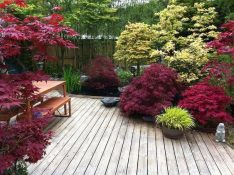A decorative and vibrant fan maple was brought to central Russia from the Land of the Rising Sun. A plant with a beautiful crown has a number of distinctive characteristics in comparison with the holly maple, which is usual for our parks.
Material Content:
Description of varieties
Fan maple in the wild is represented by shrubs and small trees with a height of 2 - 4 m. Gardeners love the culture for the umbrella-shaped crown formed by elegant branches that are covered with carved foliage resembling a fan. The bark is smooth, without cracks, painted in gray. The green color of the leaves with the advent of autumn changes to yellow. During flowering, which is observed in the second half of spring, purple inflorescences bloom.
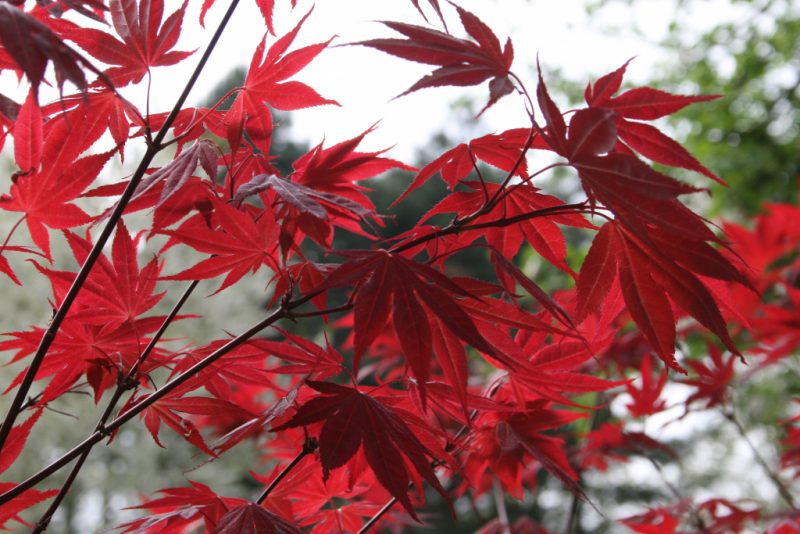
Among the most popular varieties stand out:
- Fan maple “Orange Dreams” - a spectacular variety, characterized by the color of openwork foliage, which changes from yellow-orange to summer to light green.
- "Garnett" - decorative representatives of the variety are characterized by large foliage, cut into 5 - 9 segments. In the spring, leaf plates are painted in a bright red color, which by the autumn acquires a purple hue.
- Fan maple "Atropurpureum" - a sprawling shrub or small tree with a beautiful crown of red color, which over time becomes even deeper.
Maple planting in open ground
In order for the decorative culture to take root and delight the eye with elegant shoots and a lush crown, it is necessary to properly carry out planting work.
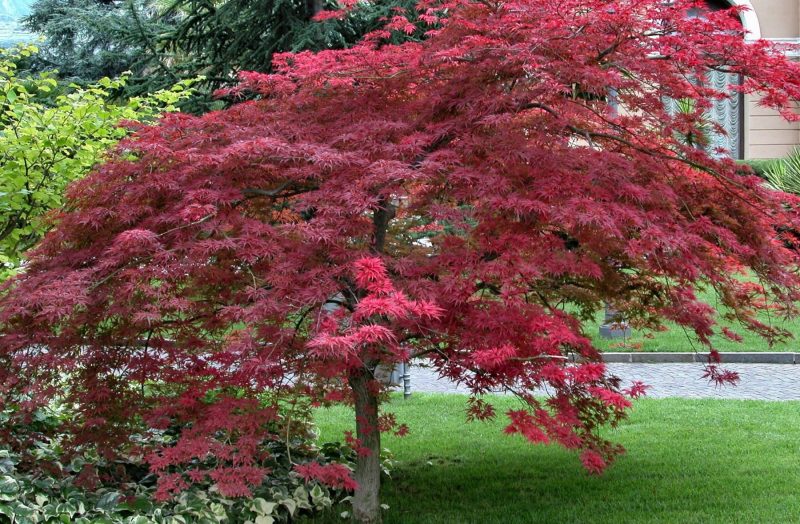
If the gardener decided to grow a spectacular representative of the exotic flora, then acquiring very expensive seedlings, the following recommendations should be considered:
- Place of purchase. High-quality planting material should be purchased in specialized stores or nurseries.
- Root system. Seedlings with a closed measles system, which is located in a container with a “native” earthen lump, have the highest survival rate.
- Condition. Before buying, the seedling is inspected for damage or disease.
For the maple fan, sunny areas are selected with the presence of free space, which should be enough for the development of a lush tree crown or shrub.
The plant prefers fertile soil, so it is recommended to pre-prepare the site and enrich the soil with nutrients.
Planting maple with a closed root system can be carried out throughout the growing season according to the following scheme:
- At the selected site, a landing pit is excavated with dimensions corresponding to the root system of the seedling.
- A drainage layer of broken brick is placed at the bottom, which will protect the roots of the maple fan from stagnation of moisture.
- A bucket of water is poured into the pit, after absorbing which, a seedling is lowered.
- Planting material is poured with the extracted earth mixed with peat.
Agrotechnics of cultivation and care
When cultivating fan maple in the garden, you should adhere to the basic agricultural requirements.
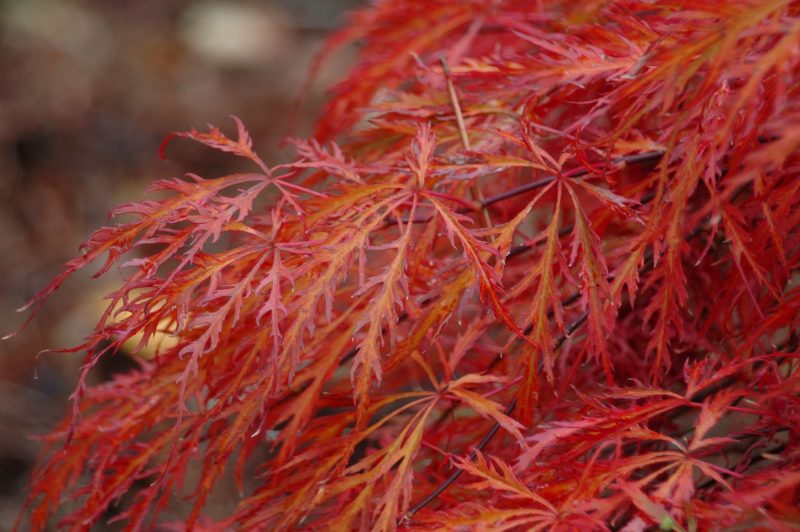
- Watering. The plant likes well-moistened soil. In the absence of natural rainfall, it is recommended to water the maple every 3 days. During periods of drought, so that the leaves do not begin to dry and fall off, sprinkling of the crown should be carried out.
- Loosening and mulching. In the spring after heat is established, as well as in the middle of autumn, it is necessary to mulch the trunk circle to prevent too rapid evaporation of moisture and freezing of the roots in winter. It is recommended to periodically loosen the soil under the tree to ensure an appropriate level of soil looseness and breathability.
- Fertilizing and fertilizing. In order to maintain a fertile soil layer, it is recommended to apply fertilizer to the trunk circle every month during the spring-summer period. Fertilizers are used with a high content of phosphorus and potassium. An excess of nitrogen can cause a loss of decorative culture. The representative of the exotic flora responds well to organic fertilizers - compost, humus.
Cropping and shaping the crown

Fan maple perfectly forms a beautiful crown on its own. When the tree becomes large enough, it is recommended that the branches that are frozen, dry and growing inward be trimmed before sap flow. If necessary, the procedure can be carried out in the fall, after the plant is left without foliage.
Disease and Pest Prevention
On the maple fan, powdery mildew and black spotting may occur, the development of which is associated with increased soil and air humidity.
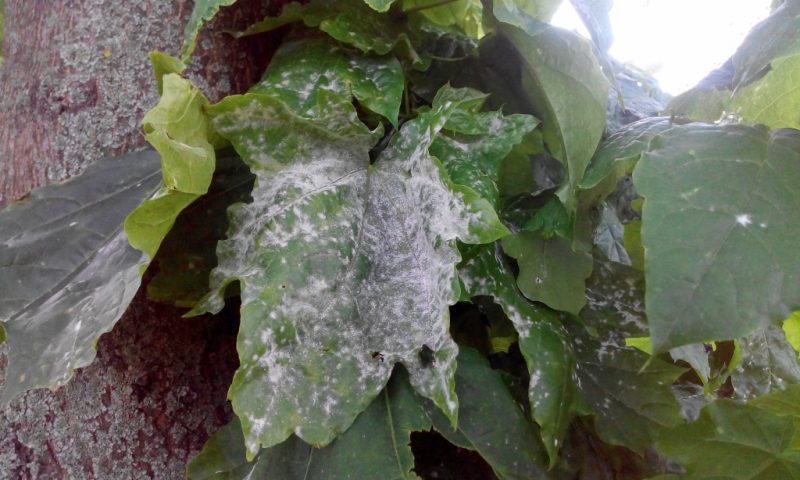
To prevent the occurrence of diseases that lead to a loss of decorative qualities and weakened immunity, it is recommended:
- timely remove fallen leaves in the fall;
- thinning pruning;
- to carry out preventive spring treatment of the culture with Bordeaux fluid.
In the event that signs of disease have already appeared on the shoots, it is necessary to immediately treat the crown with a fungicide.
Among the pests that can attack the maple, the mealybug, whitefly and leaf weevil stand out. To deal with harmful insects should be with insecticidal drugs.
As a prophylaxis, the manipulations described above should be carried out related to harvesting leaves and spraying with a tank mixture.
Wintering the Maple Maple (Acer palmatum)
Fan maple, aka maple, belongs to heat-loving crops with low winter hardiness, which must be protected from severe Russian frosts.
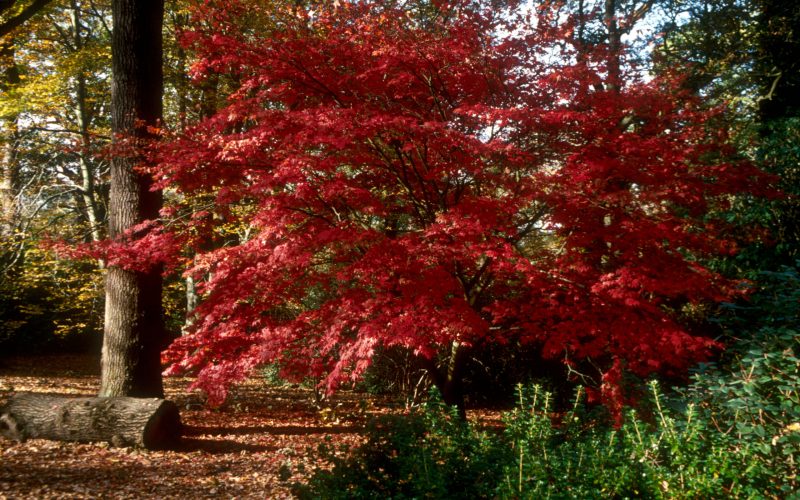
To successfully overwinter the plant, you should perform simple measures, which are as follows:
- Cover the trunk circle with a layer of mulch 15 cm thick.
- In areas with severe winters, cover the trunk with fir spruce branches.
Plant propagation methods
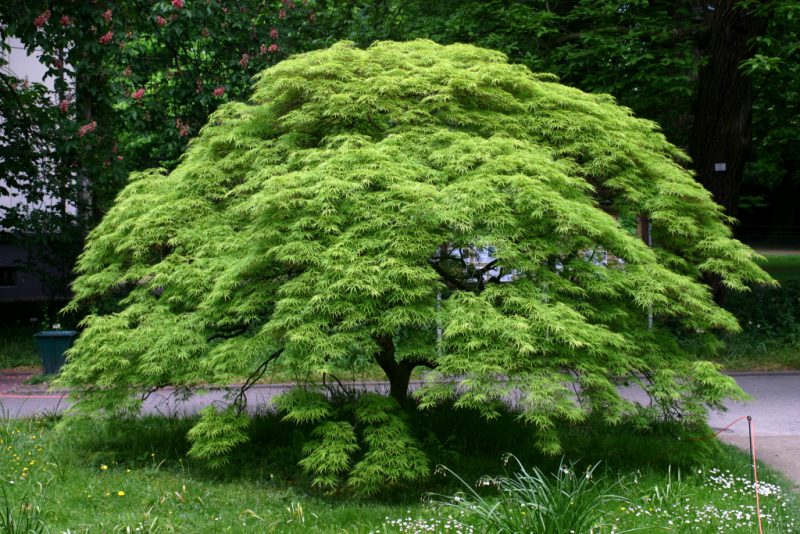
Gardeners, as a rule, fan maple propagated using seeds in the following way:
- Seed material is distributed over the loose substrate, which is slightly pressed into the soil mixture.
- The container is covered with glass and moved to a bright, warm place.
- Daily crops are aired.
- When seedlings form 2 pairs of real leaves, they dive into individual pots.
- Seedlings are planted in a permanent place when they reach a height of 30 cm.
In nurseries, propagation of varietal representatives by vaccination is practiced. At home, it is almost impossible to carry out a similar procedure without experience and skill.
Landscape design
Fan maple is widely used in landscape design:
- Using exotic plants, contrasting alleys are formed.
- Trees and shrubs of a decorative look look great near a water body.
- With the use of culture, spectacular floral and shrubby compositions are created both in the front gardens and against the background of a beautiful green lawn.
Thus, fan maple, characterized by high decorative qualities, despite the high cost, deserves special attention and, if properly grown, becomes the highlight of any garden.



